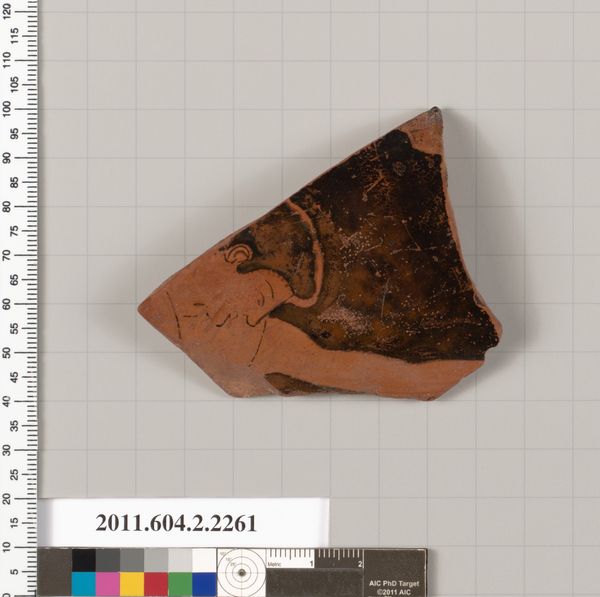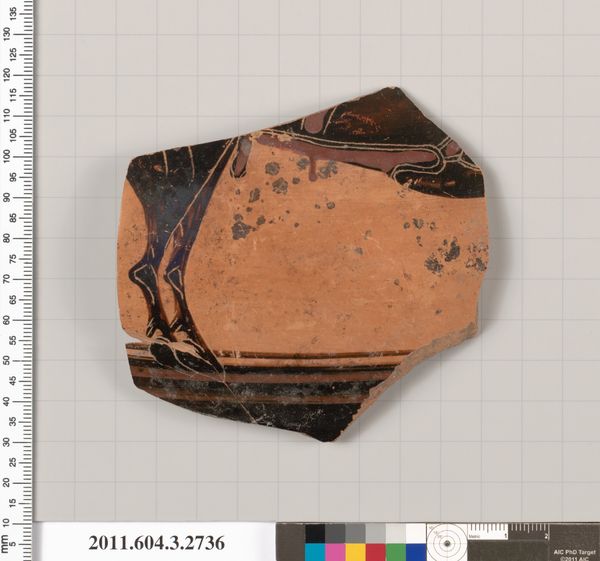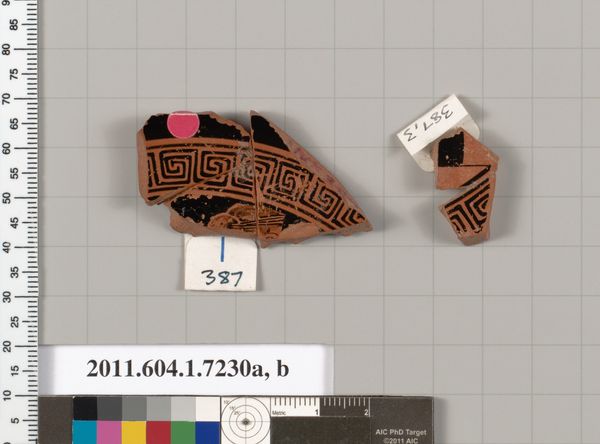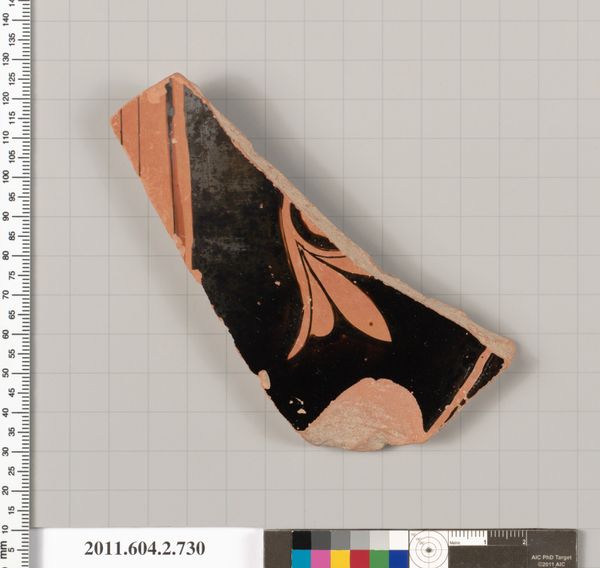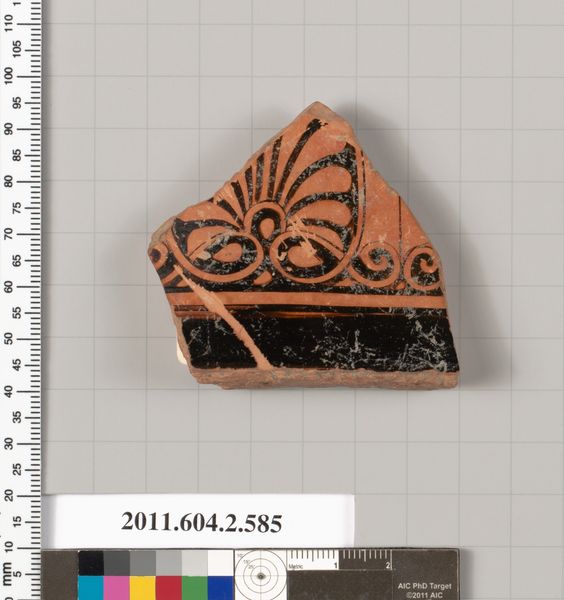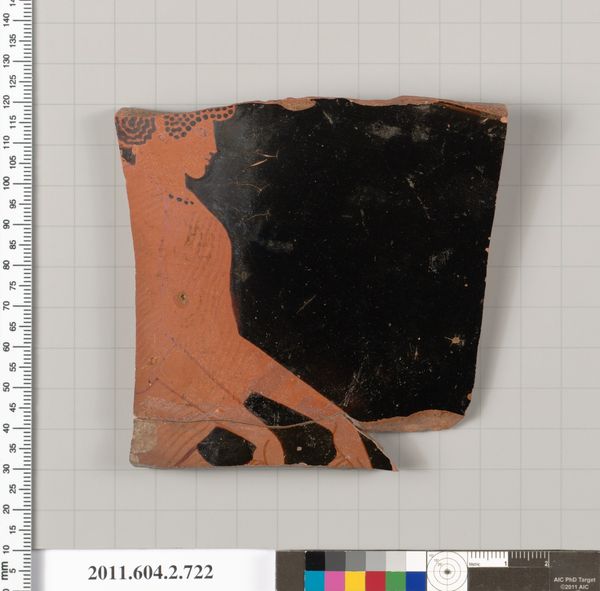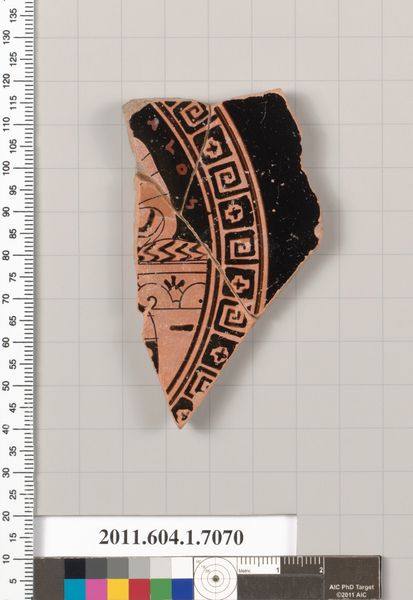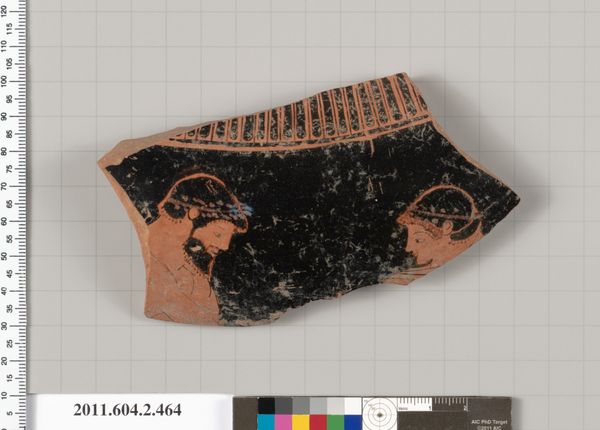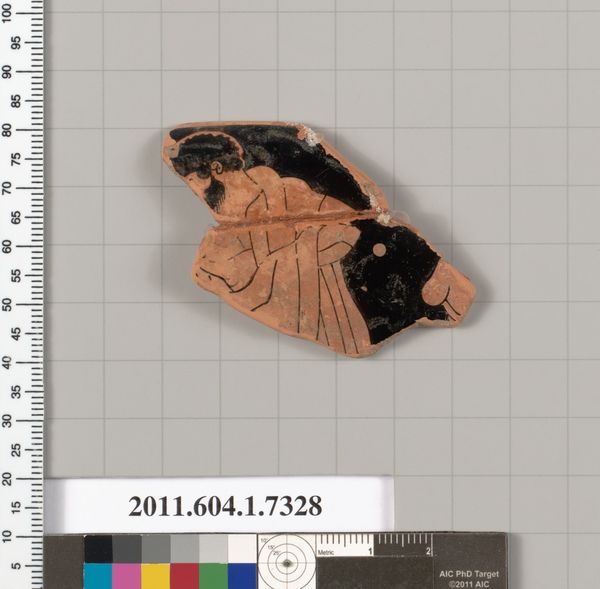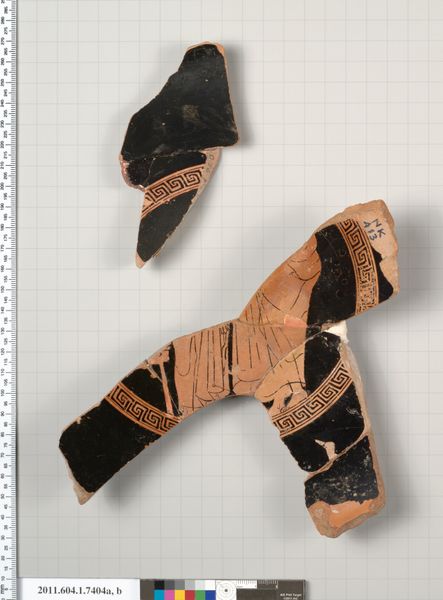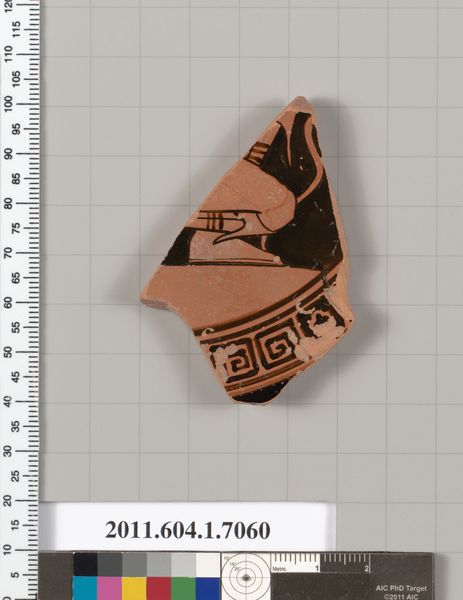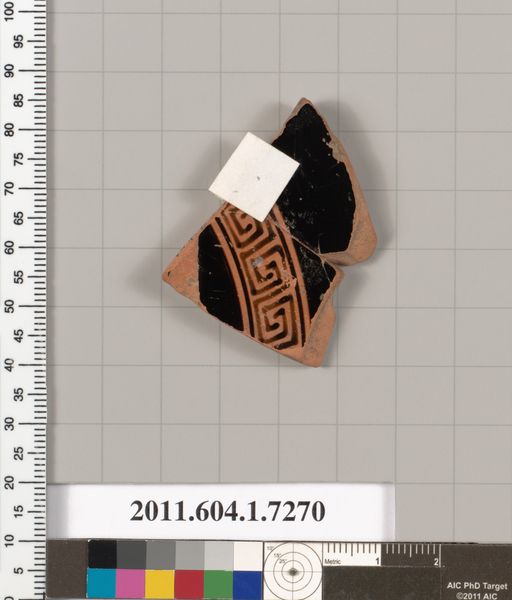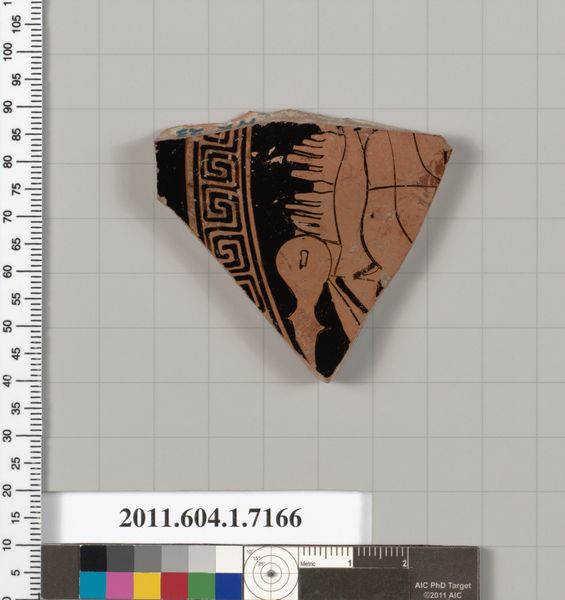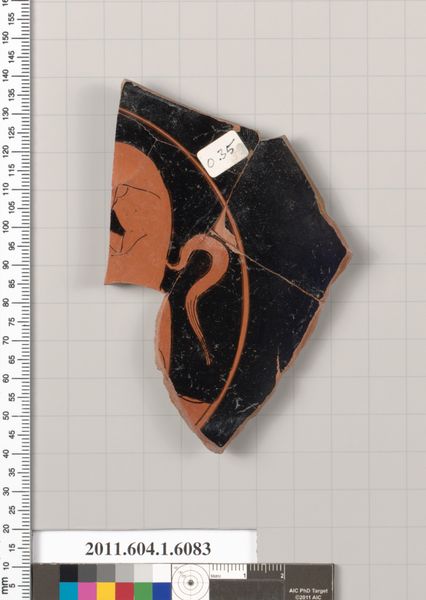
Terracotta fragment of a calyx-krater (bowl for mixing wine and water) 530 BC
0:00
0:00
drawing, terracotta
#
drawing
#
greek-and-roman-art
#
figuration
#
roman-art
#
ancient-mediterranean
#
terracotta
Copyright: Public Domain
Curator: We are looking at a fragment from a terracotta calyx-krater dating to around 530 BC. What's immediately striking to you about it? Editor: Its fragmented nature, ironically. It’s a potent reminder of time's relentless march and how histories are so often incomplete. And that tiny face! It has a poignant, almost haunting quality against the decorative motifs. Curator: The imagery and ornament carry significant cultural weight. Look at the figure—possibly a reveler or a god from Greek mythology—caught in what seems like mid-motion. The terracotta would have been painted in antiquity, rendering the symbol all the more striking. Editor: And situated on a wine vessel, which hints at ritual, celebration, community perhaps even the darker implications of social dynamics related to drinking culture in that era. I imagine how such a seemingly mundane object could become central to political ceremonies, religious practice or everyday social rituals, becoming imbued with so much power. Curator: Precisely. The krater itself, a vessel for mixing wine and water, became a symbol of civilized Greek society. The proportioning itself a metaphor. To me, that top band is also key—those palmettes aren't just decoration, they’re symbolic of cyclical renewal and fertility, and contribute to a visual vocabulary we now consider classically “Greek.” They are timeless icons that still speak volumes to the eye and the mind. Editor: Though, doesn't it also raise a dialogue of power—whose stories get preserved, valued and showcased, and to what end? And while beautiful, let's also remember these vessels likely were linked with elitist circles. Still, looking at it, it urges contemplation beyond its beautiful visual appearance. Curator: It certainly serves as a locus of intersecting themes. The very existence of a fragment also creates space for questioning the integrity of dominant narratives. Each element echoes a moment in history. Editor: Definitely. Looking at the little remains of that face – frozen in time – prompts thoughts about the complex, layered, and multifaceted story of that era.
Comments
No comments
Be the first to comment and join the conversation on the ultimate creative platform.
